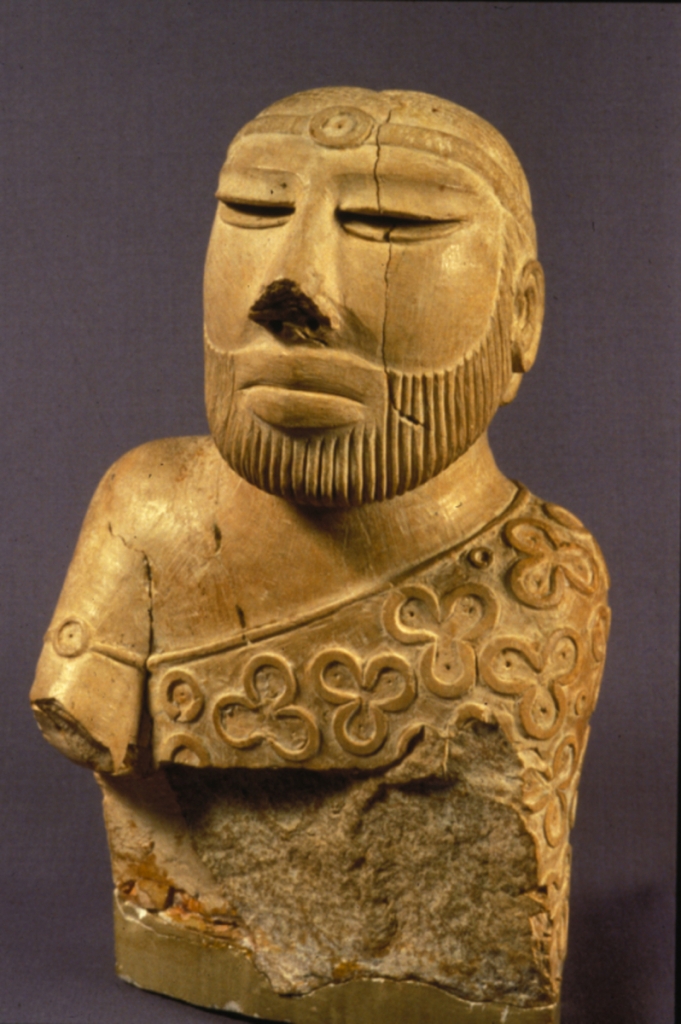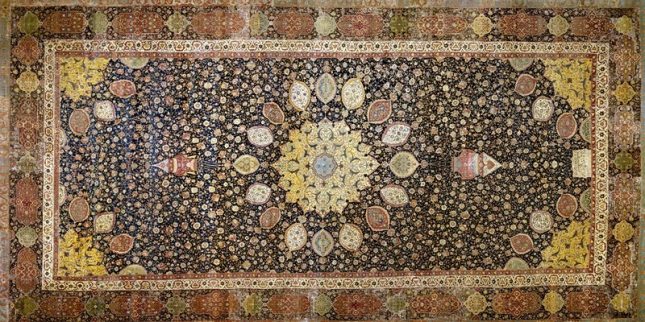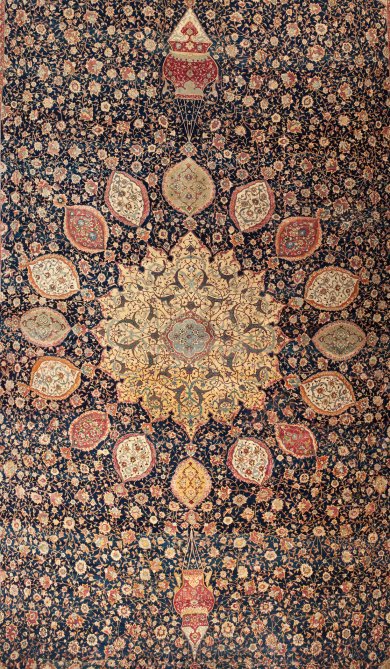
PLEASE NOTE Subscribers who usually read this blog via their email may need to click on the blue title to access it through our WordPress site instead to enable them to watch the video.
There is just so much going on in the textile world at the moment, that this will therefore be quite a long blog,,,,,

OATG member Lesley Pullen is the author of a new book examining the way textiles were presented on eighth to fifteenth century Javanese sculptures. “The equatorial climate of Java has precluded any textiles from this period surviving. Therefore this book argues the textiles represented on these sculptures offer a unique insight into the patterned splendour of the textiles in circulation during this period. This volume contributes to our knowledge of the textiles in circulation at that time by including the first comprehensive record of this body of sculpture, together with the textile patterns classified into a typology of styles within each chapter.” Patterned Splendour has a large number of detailed illustrations, which should provide an invaluable resource for the reader.
A new display was revealed at the Fashion and Textiles Gallery of the Asian Civilisations Museum in Singapore on 5 April 2021. It is based around the theme Fashionable in Asia and a good overview of the themes covered and some of the textiles on show can be found here.
According to the museum’s website “Early fashion theorists excluded the non-Western world. They saw dress of “uncivilised” people outside of urban Europe as static and unchanging, hobbled by tradition. Seeking to challenge Eurocentric misconceptions, with the latest display in the Fashion and Textiles gallery, we re-centre on Southeast Asia, where indigenous fashions moved at their own pace and with their own standards – but were no less fashionable!”

Image courtesy Adriana Sanroman, From Birth to Death: The Silk Flower Industry in Mexico, Session 1A.
The 2020 Textile Society of America Symposium Hidden Stories/Human Lives had, of necessity, to be held online. The advantage of this virtual format is that the TSA were able to record many of the sessions. Those recordings have now been made available. The subjects are incredibly varied – the silk flower industry in Mexico, inscribed textiles from Egyptian burial grounds, the white Haku of Peru, Hmong dress in China and the ‘Mamluk’ quilt cover, to name just a few. There are over seventeen hours of recordings – enough to satisfy even the most devoted textilian! The easiest way to work out which parts may be of most interest to you is to go to the pdf of the full programme here. The programme is listed on pages 19-27, followed by the abstracts for each paper. Simply identify the talks of interest to you and which session they were part of. For example “Materials and Making of Ṭirāz Textiles” was the third paper in session 2A. This should help when deciding which recordings to watch first.

Next Thursday, 6 May 2021, Dr Moya Carey (Curator of Islamic Collections at the Chester Beatty Library in Dublin) will be the speaker for an online event hosted by the Hajji Baba Club of New York. The title of her presentation is Safavid Dynastic Vision: Shah Tahmasp’s Commission of the Ardabil Carpets. The pair of Ardabil carpets were woven for the Safavid dynastic shrine in northwestern Iran. Today they are celebrated as masterpieces of sixteenth-century design and technique,. One of the pair is in the V & A Museum and the other is in the Los Angeles County Museum of Art. “Remembered together, the pair offer a rich context for Safavid Shah Tahmasp’s visionary intentions, for himself and for his dynasty’s sacred tomb complex in Ardabil, northwestern Iran. This talk examines Iran’s political conditions in the year 946H (1539-40, the date woven into each carpet), and the likely dynastic significance of the two hanging lamps that form each carpet’s central axis.” – Hajji Baba website. The talk begins at 11:00 EDT, which is 16:00 BST. To attend the meeting please compete the RSVP here.

On 8 May 2021 a new exhibition entitled The Spirit Wraps Around You: Northern Northwest Coast Native Textiles opens at the Alaska State Museum in Juneau, Alaska. “This exhibit traces the history of the sacred textiles known today as “Ravens Tail” and “Chilkat” robes. Two dozen robes will carry the story of Native weaving among the Tsimshian, Haida, and Tlingit of Alaska and British Columbia, representing both ancient and modern ceremonial robes made by Alaska Natives and First Nations. Woven from the plush white fur of mountain goats, these robes were seen by early Euroamerican visitors to the northern Northwest Coast when they contacted First Nations and Alaska Native people. Their use was confined to sacred ceremonies, where dancers wore them to display the crests of their clans. Robes were also used as diplomatic gifts to other clans and tribes. In the 1900s, only a few weavers carried these unique tradition into the 21st century.” – museum website. The website mentions a couple of lectures. I have checked with the museum and there will be limited attendance with online registration opening soon. The good news is that they also informed me the lectures will be recorded. More information when I have it!

The next OATG talk will take place on Thursday 13 May 2021 at 18:30 BST. The speaker will be Dr Francesca Leoni, Assistant Keeper and Curator of Islamic Art at the Ashmolean Museum in Oxford. The subject will be Drawing with Silk: Greek Island Embroideries in the Ashmolean Museum. This talk will explore the visual richness and technical sophistication of 18th- and 19th century Greek embroideries, as well as their debt to the many artistic traditions that flourished around the Mediterranean. It is based on the exhibition Mediterranean Threads – Greek Embroideries 1700 – 1900 AD, which Dr Leoni curated. An online interactive version of the exhibition is available here.
Dr Leoni has also written a very interesting article for HALI, explaining how a discovery in the Ashmolean Museum’s archives threw fresh light on an important area of British textile collecting – the acquisition of Greek island embroideries – and led to a new exhibition and catalogue.
OATG members should now have received their invitation to this talk, but still need to register for it. It is also open to non-members for a small donation. Click here for more details.

On Saturday 15 May 2021 Andrea Rusnock will give an online talk on Russian Folk Embroidery, hosted by the San Francisco School of Needlework and Design. Andrea is a Professor of Art History and will be discussing “Russian embroidery at the end of the Imperial period, when middle-class women increasingly created their own needlework, aided by a proliferation in pattern books, and, at the same time, there was a renewed interest in folk embroidery.” This talk takes place at 10:00 PDT, which is 18:00 BST, and you can register for it here.

The Chintz: Cotton in Bloom exhibition at the Fashion and Textile Museum, London is due to open on 18 May 2021 subject to government guidelines. This exhibition has been organised by the Fries Museum, Leeuwarden, The Netherlands, where a version of it was on display in 2017. “
The complicated technical craftsmanship required to fix bright dyes to cotton, devised across centuries and using complex chemical formulae, meant that for many years Chintz was a closely guarded secret, or preserve of the elite. However, by the 18th century chintz had become more widely accessible. The lightweight, washable, gaily coloured and boldly patterned cottons eventually became a sensation throughout England and across Europe. These developments resulted in the intricate, colourful flowers of chintz fabric being cherished and preserved by generations.
Chintz: Cotton in Bloom showcases some 150 examples of this treasured textile, originating from all around the world; from mittens to wall hangings and from extravagant 18th-century sun hats to stylish mourning dresses.” – FIT website. For more details and booking please click here. You may also enjoy reading this short blog about chintz by Emma Sweeney.

The buteh/boteh motif often appears on chintz, so I thought it was worth sharing the link to this talk by Gillian Vogelsang-Eastwood of the Textile Research Centre, Leiden. Many thanks to Cheri Hunter of the TMA/SC for this information. Gillian recently did a Zoom lecture for the Fowler Textile Council, examining the global history of the paisley pattern. The recording of this talk can be viewed here. If you want to know more about this motif it is also well worth visiting the website of the TRC Leiden, which has an excellent online exhibition on the subject.

Those with an interest in early textiles will want to sign up for this talk, Cotton & Colour: A Deep History of Indus Valley Textiles, hosted by the Royal Ontario Museum on 18 May 2021 at 16:00 EDT, which is 21:00 BST. From the earliest evidence of cotton (7,000 BCE) to the importance of fibre arts in the emergence of early urban centres, ROM botanist Deborah Metsger and archaeologist J. Mark Kenoyer will explore the rich and diverse history of textiles in the early settlements of the Indian subcontinent. Click here for more details and to register.

The British Museum exhibition Arctic: Culture and Climate has now ended, but the good news is that the museum have now made a virtual tour of it available. You can take your own route, or go to specific sections – the parka above is from the ‘weather proofing’ section. Clicking on the lower case ‘i’ gives additional information. Highly recommended!

Finally, readers will know from my previous blogs of the devastating impact Cyclone Seroja had on the tiny eastern Indonesian island of Savu. I know some of you contributed to the appeal for help, and thought you would like to see that the first load of roofing material has now arrived. This had to be transported ashore by small boats as the jetty is still blocked by a capsized ferry. If you would like to help please go to the Tracing Patterns Foundation website and ensure you click Meet the Makers – Tewuni Rai as the destination for your donation.

